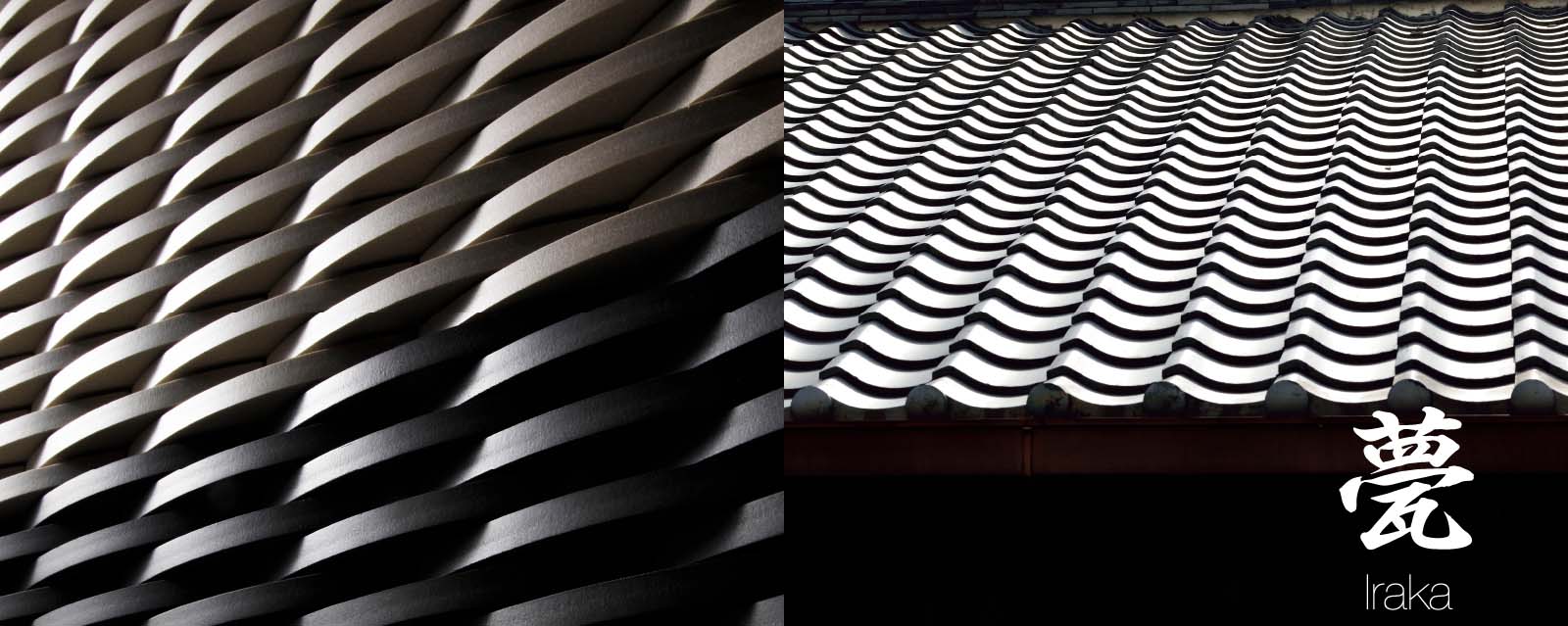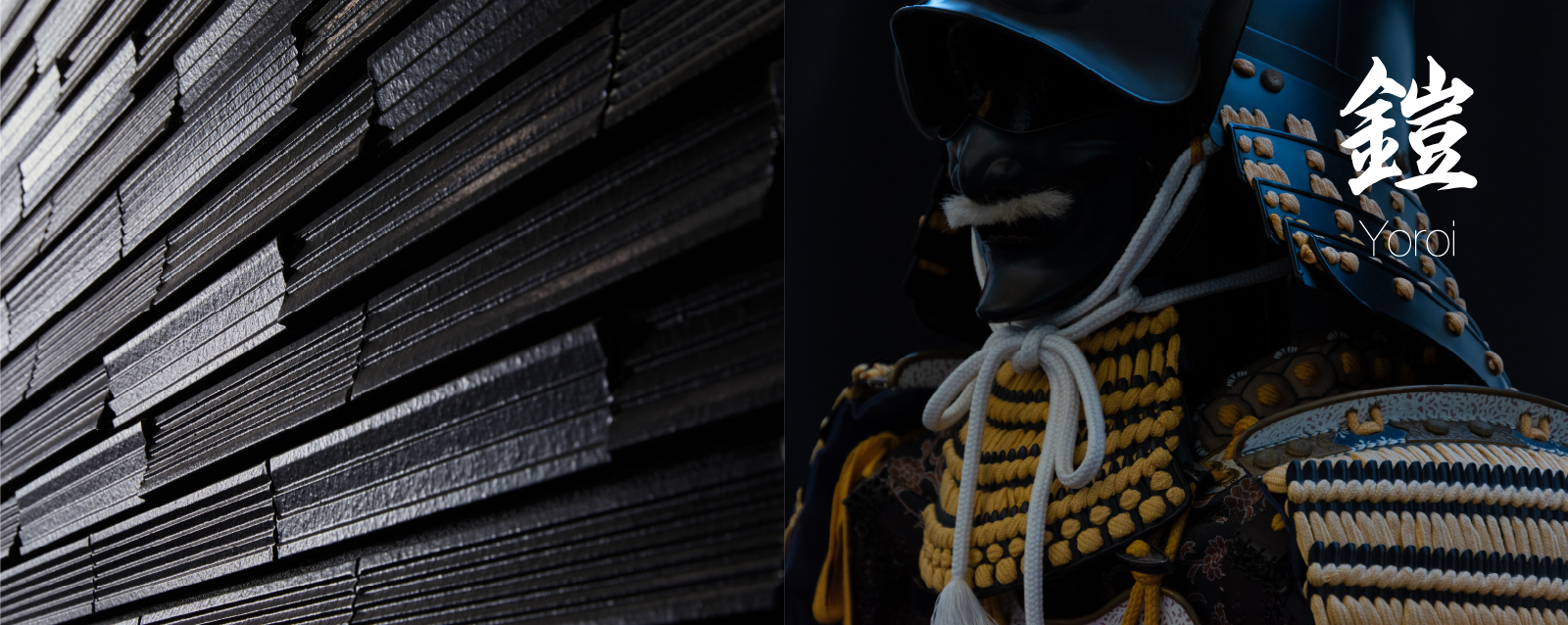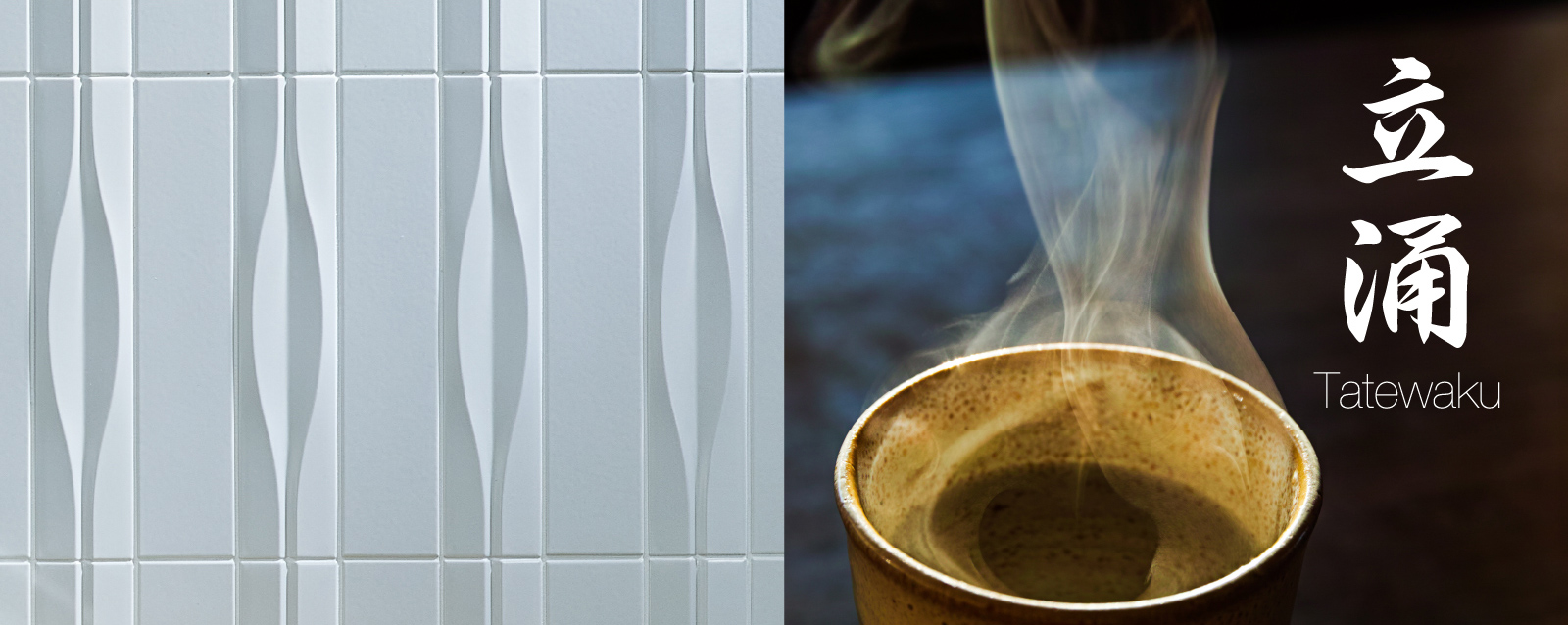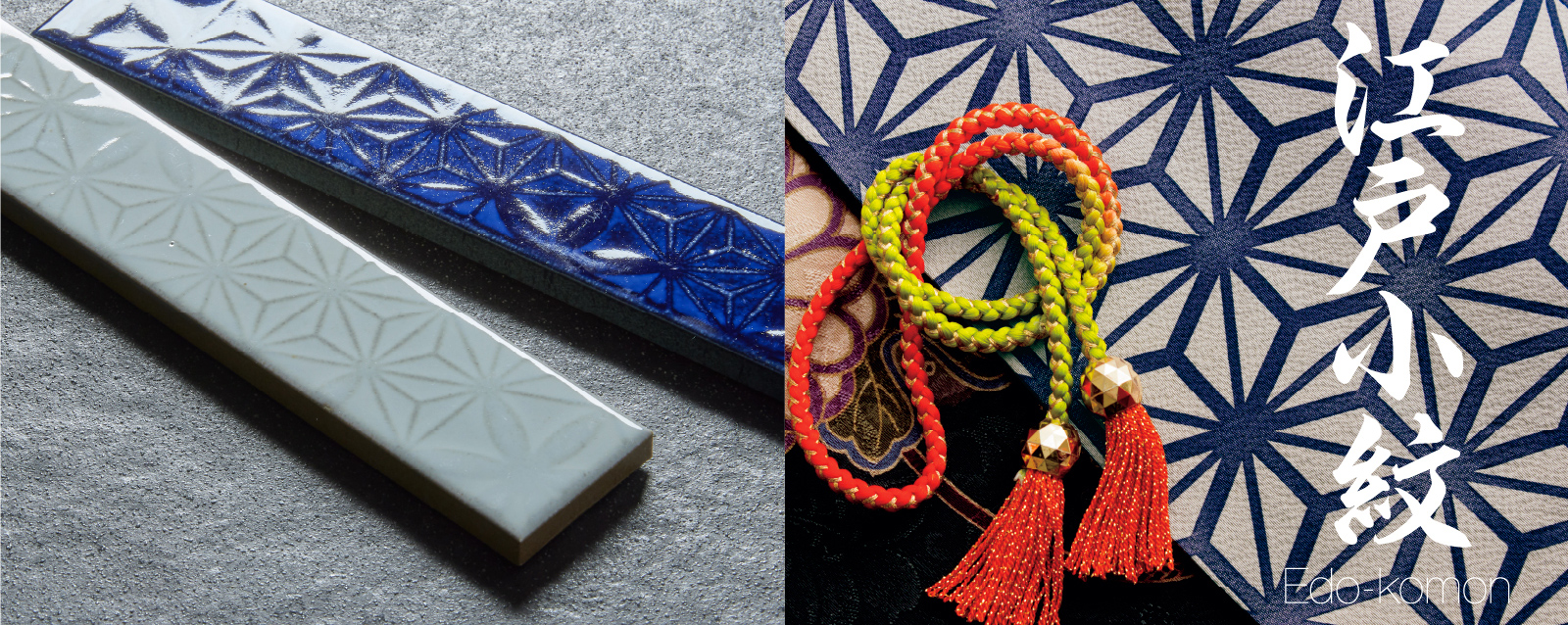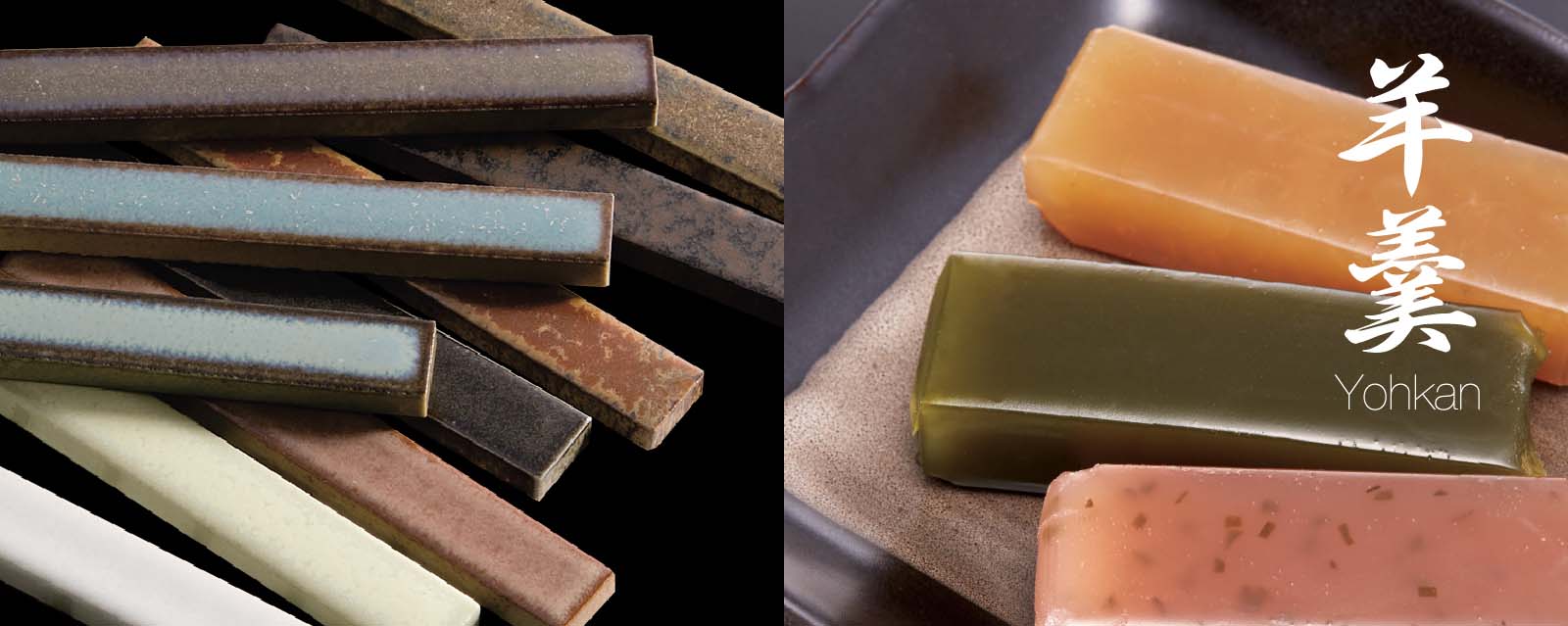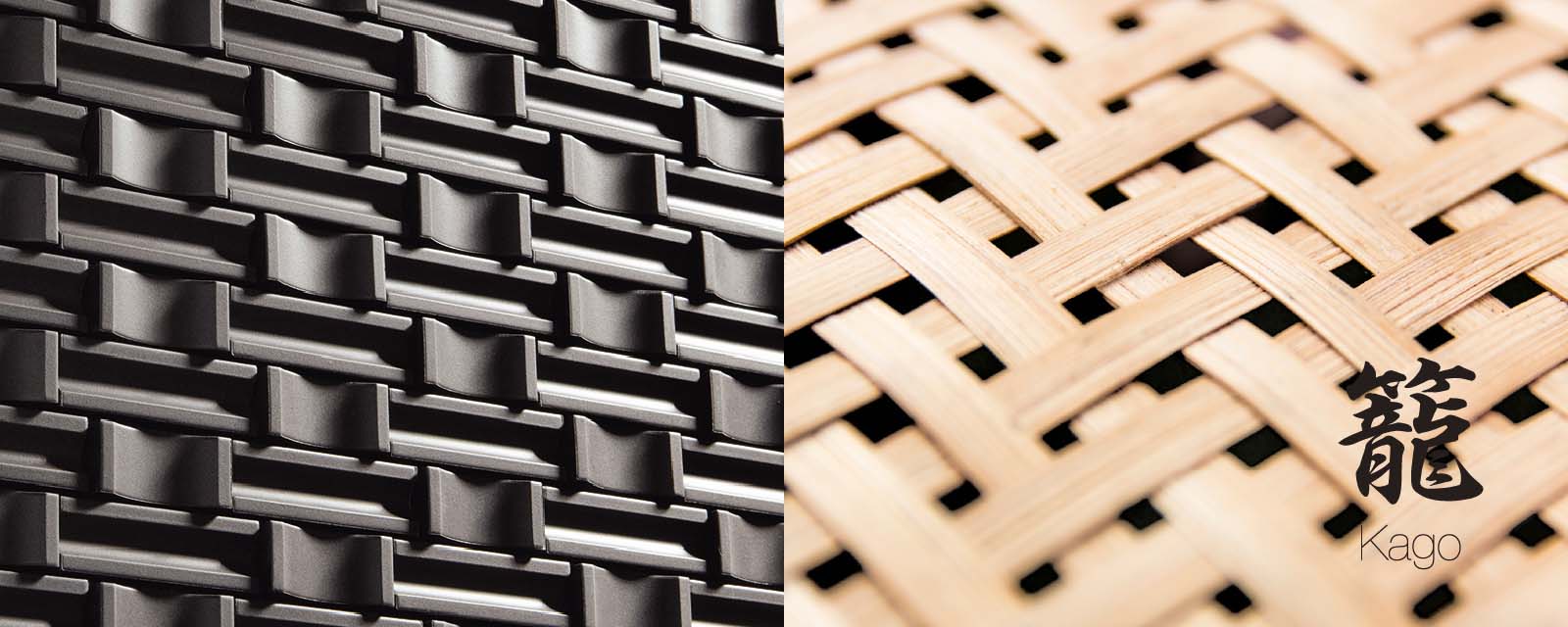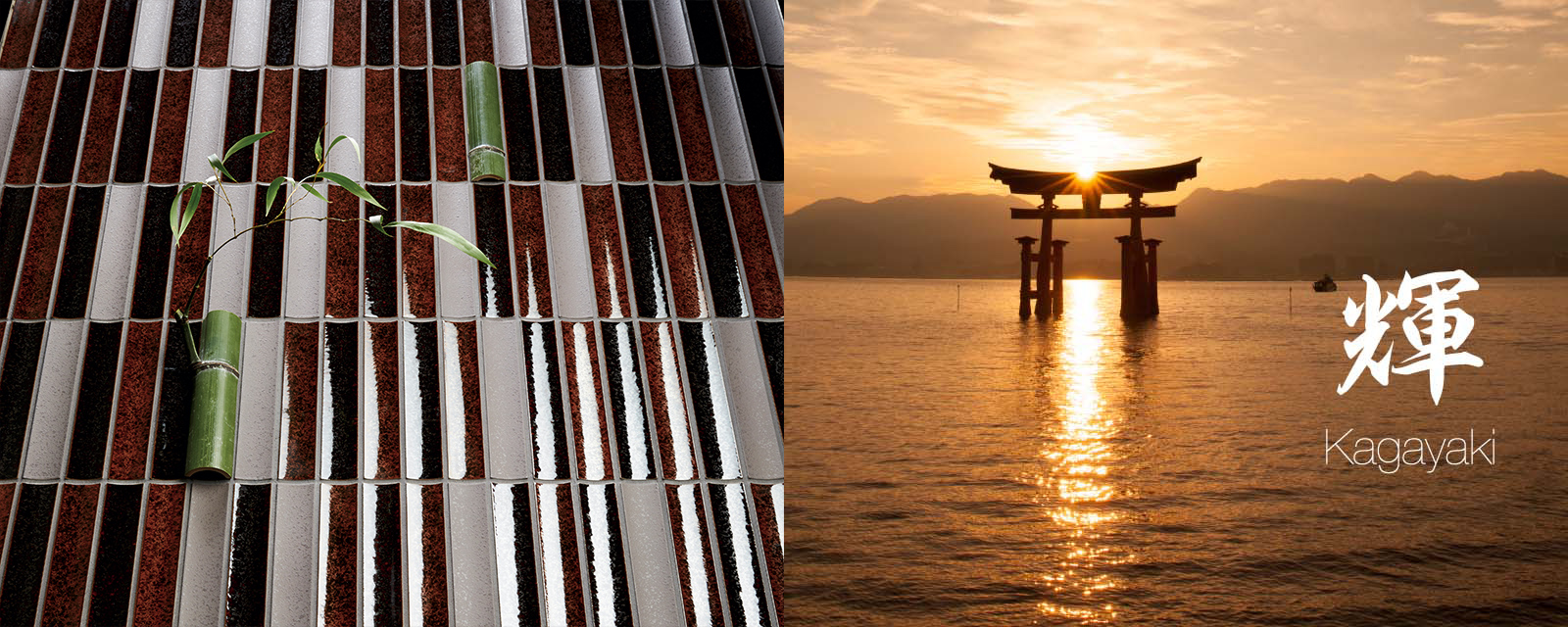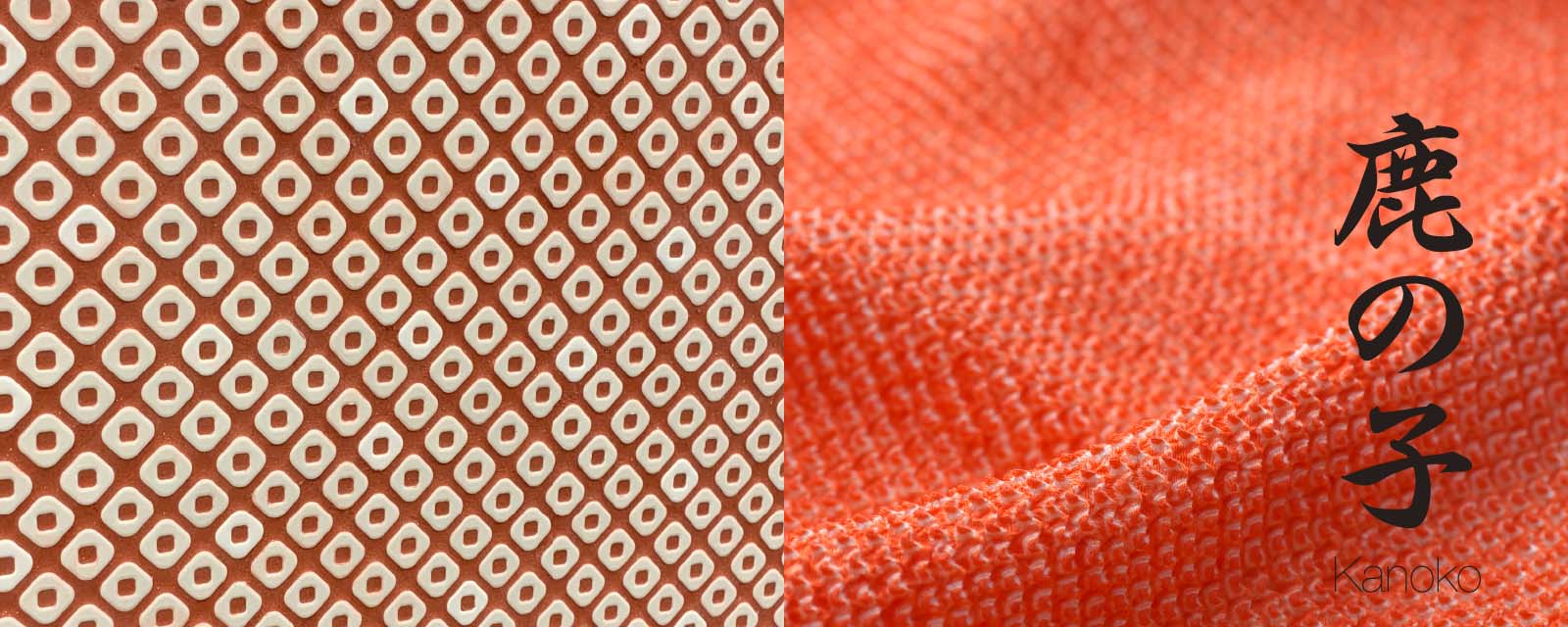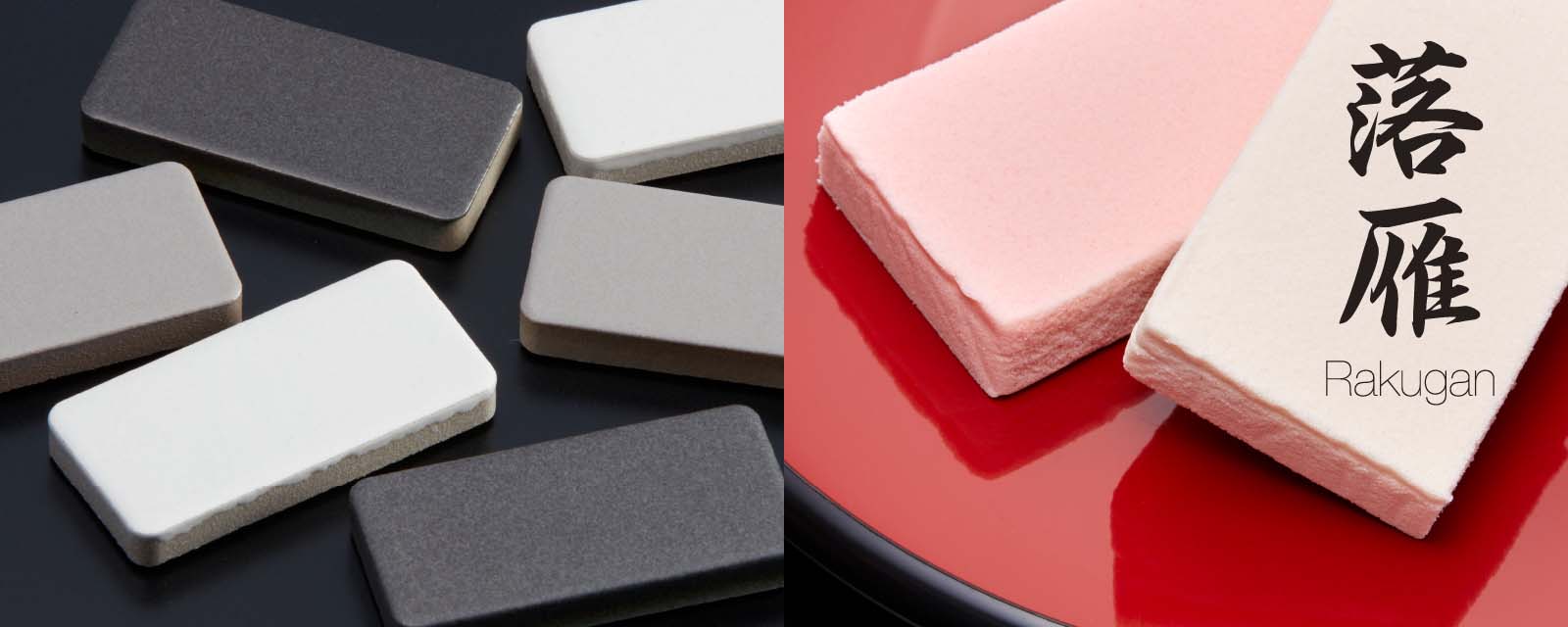CRESCENT BORDER x Iraka
Iraka, roofs of traditional Japanese houses, are made with ceramic tiles that collectively create a
picturesque image of waves formed in the sky. Similarly, the spatial formation using CRESCENT BORDER tiles,
individually shaped in the form of a crescent moon, presents a laced arrangement that looks like ocean waves
shining with moonlight.
TOURAKUHEKI x Yoroi
The TOURAKUHEKI design expresses calm depth and strength. Its roots can be traced back to the designs used in armor, it’s military equipment unique to Japan. During the Middle Ages, when Japan was ruled mainly by “Samurai warriors”, the protective garments required in battle acquired a unique appearance due to changes in warfare methods and a culture that valued Japanese beauty. The TOURAKUHEKI was inspired by armor shields called “the Shikoro” and “the Yoroi-bari”. These are armor covering which consisted of multiple boards stacked and bound together. It was used to protect the back of the head, neck, and shoulders.
YUMON x Tatewaku
The YUMON is a pair of two curved lines, one bulging and the other indented, that boldly and rhythmically compose the space. It is inspired by the traditional Japanese pattern "Tatewaku," which has been used since “the Heian” period (794-1192) to simply express the appearance of rising water vapor. Since ancient times, the pattern of "Tatewaku" has also been referred to as the shimmering flames of a rising sun or rising clouds and is considered an auspicious and auspicious pattern.
YUKAGE x Edo-komon
The graceful and delicate expression of the YUKAGE. It is a projection of the world of "Edo-komon," a dyed fabric that has been handed down since “the Edo” period (1603-1868). These patterns are refined with the aesthetic sense of "Iki" (style) cultivated in the Edo period.
The designs used in YUKAGE are all considered to be auspicious. The pattern in the photo is one of them, "Hemp leaf". The design of neatly lined up hexagons is meant to ward off evil.
YOHEN BORDER x Yohkan
The Japanese have traditionally expressed the wonders of nature by portraying the changes of the four
seasons in sweets such as Yohkan, a classic thick jellied confection made from beans. Like the gradation of
colors in the scenery, YOHEN BORDER offers a spectrum of subtle color differences across every single piece.
RHYTHMIC II CROCHET x Kago
Woven geometry can be found all around the world. Baskets and colanders woven from bamboo have been
implements used in Japan for centuries. A piece-by-piece combination of beauty emerges from simple, regular
patterning, and results in bold shading that transcends East and West. The appearance is decidedly
impressive.
SAIRIN x Kagayaki
Japan is a nation richly blessed with water and seasonal pictures. Since ancient times, people have learned
to appreciate nature’s emotions through the sun’s brilliance reflecting off of water: the white surface of
water caressed with dawn’s mist early in the morning, the bright surface of water from daytime sunlight, the
evening water’s surface dyed in crimson from the sunset, and the opaque water surface gently undulating in
pitch-black darkness. SAIRIN captures these emotions of nature.
KANOKO x Kanokoshibori
One form of shibori, the Japanese manual resist-dyeing technique, is Kanokoshibori, which involves binding
minuscule portions of fabric with a thread before dyeing. When untied, the bound parts remain white,
resembling the pattern of a fawn’s back, from which the name was derived. KANOKO features a gentle Japanese
design using this artisan technique as a motif.
2 in 1 MOSAIC x Rakugan
The slightly rounded, petite form represents the motif based on rakugan, a traditional Japanese confection
made from rice flour and sugar and pressed into a wooden mold. Historically old cities of Japan like Kyoto
and Kanazawa produce large quantities, which are enjoyed as accompaniment in tea ceremonies and given as
offerings at events memorializing ancestral spirits.
